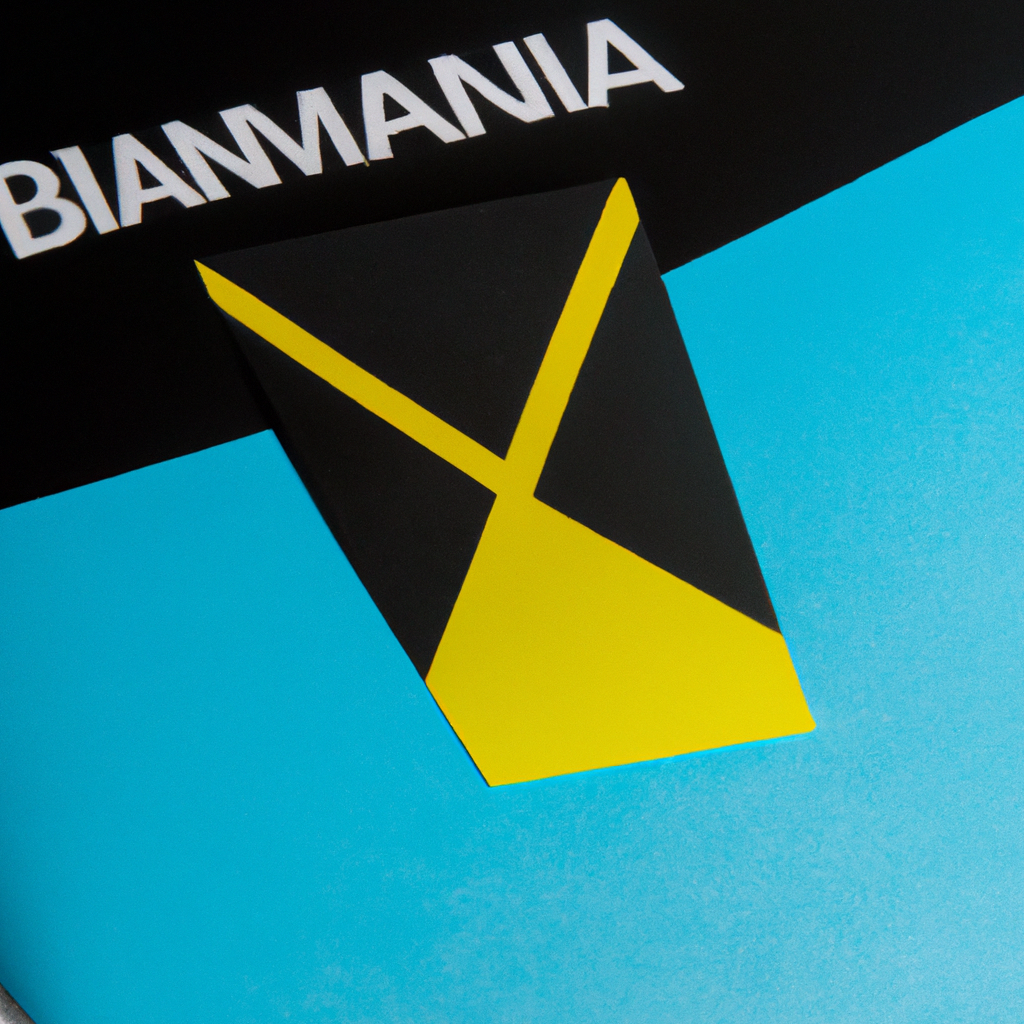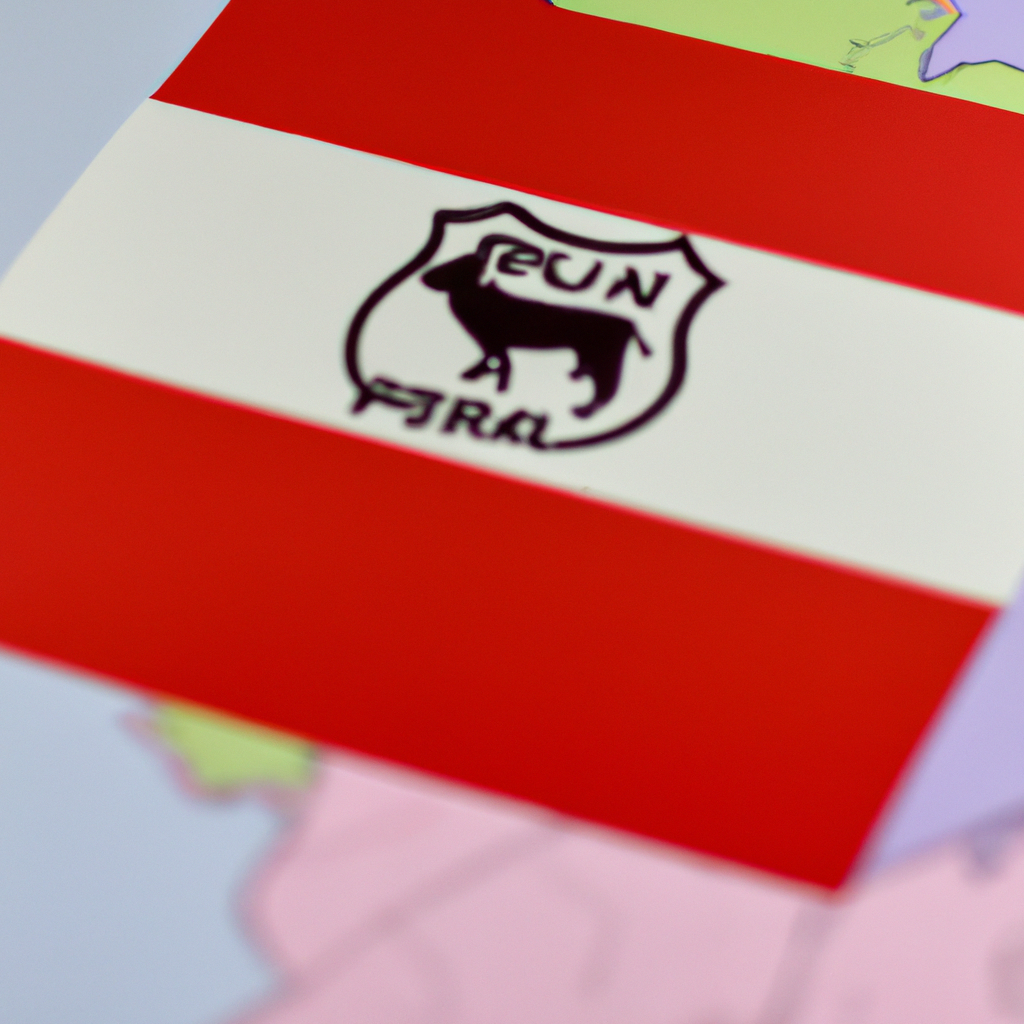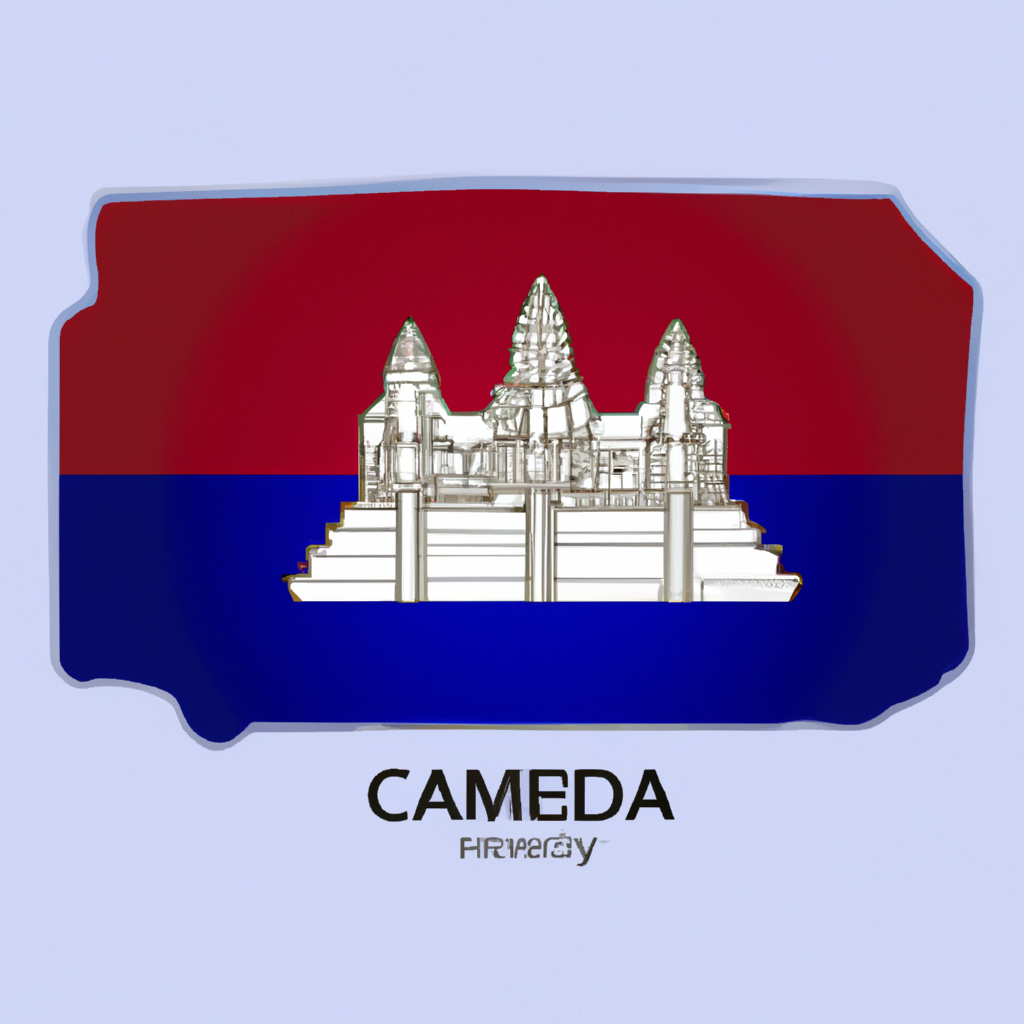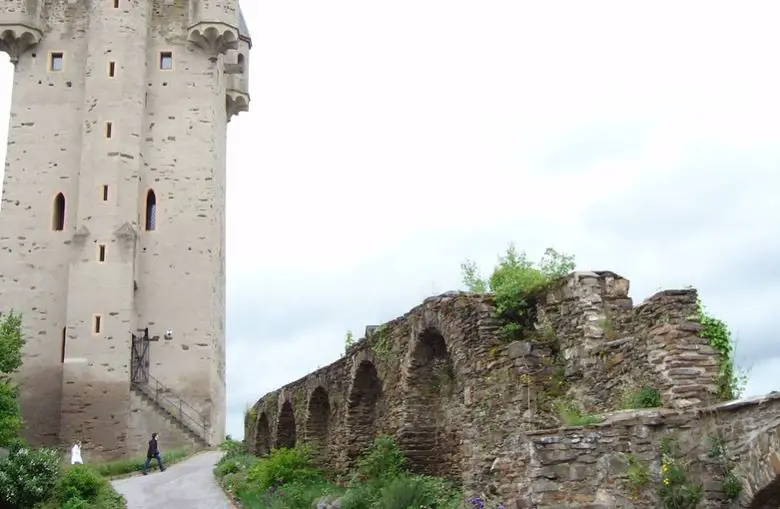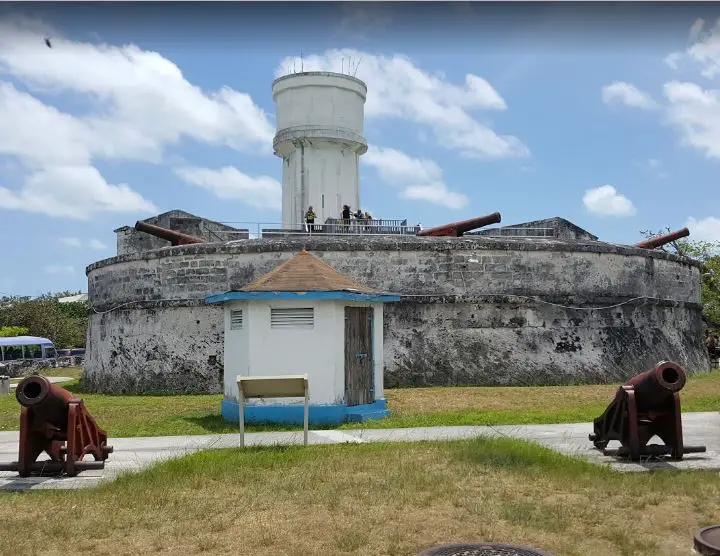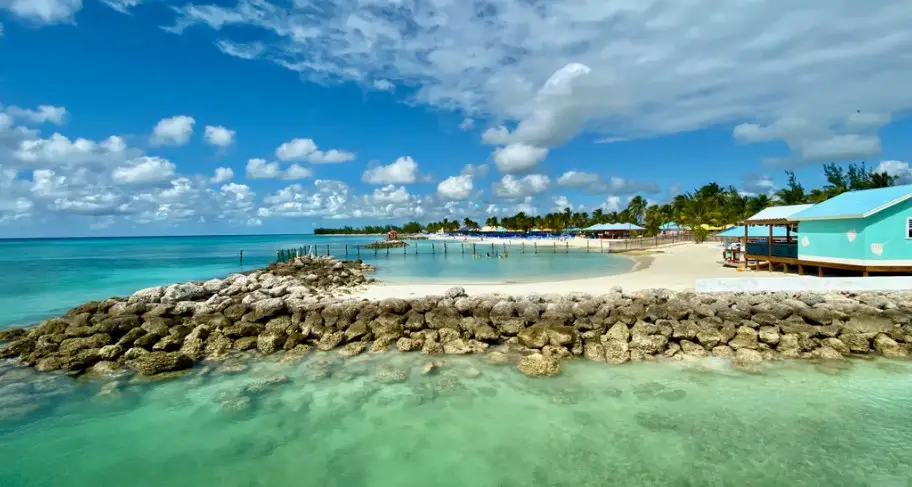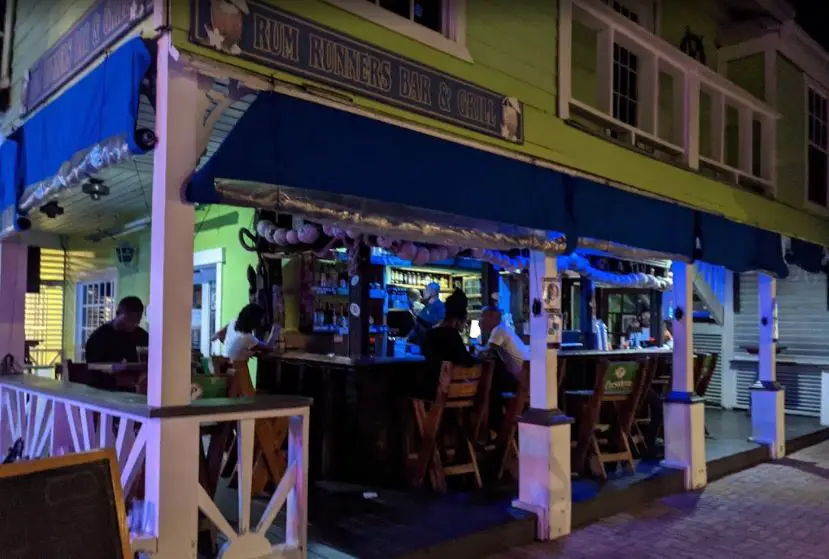Nassau, Bahamas: Interesting Facts,History, Things to do,Why to Visit
Post ByAdequate Travel
When you plan an exotic island getaway, consider Nassau in the Bahamas. It is a great destination for anyone in search of an exciting vacation experience. Located in the Caribbean sea, this island offers a unique blend of fascinating history, interesting facts, and things to do. From historic sites to natural attractions, there is something for everyone to enjoy. The locals are friendly and welcoming and the city is filled with exciting activities. Get ready to be blown away by all that Nassau has to offer — you won't regret a single minute of your escapade to this paradise!
The Bahamas is a country located in the Caribbean region, consisting of an archipelago of islands. The capital city is Nassau. The Bahamas has a population of approximately 395,361 people. It is known for its stunning white-sand beaches, crystal clear turquoise waters, and vibrant coral reefs, making it a popular tourist destination. The economy relies heavily on tourism and offshore banking. The Bahamas has a stable democratic government and is a member of the Commonwealth. The country was severely affected by Hurricane Dorian in 2019, causing widespread destruction and loss of life.Step back in time as you visit the historical sites in bahamas, where the past comes alive.
Interesting facts
Geography
The Bahamas is an archipelago consisting of 700 islands and over 2,000 small cays, stretching over 500 miles in length. The islands are located in the Atlantic Ocean, southeast of the coast of Florida. The most populated island is New Providence, where the capital city Nassau is located. Other major islands include Grand Bahama, Abaco, Andros, and Eleuthera.
Tourism
The Bahamas is known for its vibrant tourism industry. With beautiful sandy beaches, crystal-clear turquoise waters, and a tropical climate, the country attracts millions of visitors each year. Tourism contributes greatly to the economy of the Bahamas, providing employment opportunities and generating revenue. Some popular tourist attractions include Atlantis Paradise Island, Exuma Cays Land & Sea Park, and the swimming pigs of Big Major Cay.
Culture and Music
The culture of the Bahamas is a blend of African, European, and indigenous influences. The Junkanoo festival is a significant cultural event and is celebrated on Boxing Day (December 26th) and New Year's Day. It involves colorful parades, music, dance, and elaborate costumes. Bahamian music is also a prominent aspect of the culture, with genres such as rake and scrape, goombay, and soca being popular. Musicians like Sidney Poitier, Lenny Kravitz, and Rihanna have Bahamian roots.
Marine Life and Ecotourism
The Bahamas is home to diverse marine life and offers excellent opportunities for snorkeling, scuba diving, and ecotourism. The islands are surrounded by extensive coral reefs, including the third-largest barrier reef system in the world. Visitors can explore underwater caves, swim with dolphins, or go on eco-tours to observe the rich biodiversity and preserved natural habitats. The Exuma Cays Land & Sea Park, Andros Barrier Reef, and Dean's Blue Hole are popular destinations for nature enthusiasts.
History and Independence
The Bahamas was originally inhabited by the Lucayan people until Christopher Columbus arrived in 1492. The islands were then colonized by various European nations, including the Spanish, British, and French. The country gained independence from the United Kingdom on July 10, 1973, becoming a sovereign nation. Today, the Bahamas is a member of the Commonwealth of Nations and has a parliamentary democracy.
From museums to parks,bahamas tourist attractions offer something for everyone, making it a versatile destination for all type of tourists.The History of the Bahamas
The history of the Bahamas is rich and varied, with influences from the indigenous Arawak people, Spanish explorers, British colonization, and African slavery. The islands were first inhabited by the Arawak people around 600 AD, who lived in small communities and practiced agriculture and fishing.
Exploration and Spanish Influence
In 1492, Christopher Columbus arrived in the Bahamian archipelago during his first voyage to the Americas. He claimed the islands for Spain and named them "Baja Mar" meaning "shallow sea." The Spanish influence was significant during this time, and they introduced various agricultural crops, such as oranges, lemons, and sugarcane.
British Colonization and African Slavery
During the 17th century, the British claimed the Bahamas and began to establish settlements. Many of these early settlements failed due to conflicts with the Spanish and pirate attacks. However, in 1717, the British Crown granted the islands to the Eleutherian Adventurers, a group of English Puritans who sought religious freedom. They successfully established permanent settlements, and by 1720, the Bahamas became a British crown colony.
With the establishment of British rule, the Bahamas became a center for African slavery. Enslaved Africans were brought to the islands to work on plantations, particularly producing cotton and salt. The majority of the Bahamian population today is descended from African slaves.
Emancipation and Independence
Emancipation of slaves in the Bahamas took place in stages, starting in 1834 and ending in 1838. The economy shifted from a reliance on slavery to the cultivation of sisal, pineapples, and other crops. In the early 20th century, the Bahamas experienced a tourism boom, attracting wealthy visitors from the United States. This led to the development of luxury hotels and the growth of the service industry.
In 1973, the Bahamas gained independence from Britain and became a sovereign nation within the Commonwealth. Since then, the Bahamas has continued to thrive as a popular tourism destination, known for its pristine beaches, crystal-clear waters, and vibrant culture.
In summary, the history of the Bahamas encompasses the arrival of indigenous people, Spanish exploration, British colonization, the era of African slavery, the transition to other industries, and eventual independence. Today, the Bahamas remains a vibrant nation that celebrates its diverse heritage while embracing its role as a top tourist destination.
Exploring the rich heritage of historical sites in bahamas is a journey through time and culture.Famous Things in the Bahamas
1. Pink Sand Beaches:
One of the most famous features of the Bahamas is its stunning pink sand beaches. The unique pink hue comes from microscopic coral organisms called Foraminifera, whose shells wash up on the shore and mix with the white sand. Some of the popular pink sand beaches include Pink Sands Beach on Harbour Island and French Leave Beach on Eleuthera Island.
2. Swimming Pigs of Exuma:
The swimming pigs of Exuma have gained international fame. These friendly pigs live on a small uninhabited island called Big Major Cay. Visitors can take a boat tour to the island and have the incredible experience of swimming and interacting with these adorable animals.
3. The Atlantis Paradise Island Resort:
The Atlantis Paradise Island Resort is a world-renowned luxury resort located on Paradise Island. It offers a variety of amenities and attractions, including a water park, marine habitat, casino, spa, and numerous dining options. The resort's iconic architectural design and extravagant facilities make it a must-visit destination in the Bahamas.
4. Junkanoo Festival:
The Junkanoo Festival is a vibrant cultural celebration held in the Bahamas during the Christmas season and on New Year's Day. It features colorful parades, music, dance, and elaborate costumes. The festival is deeply rooted in Bahamian culture and showcases the country's rich heritage.
5. Thunderball Grotto:
The Thunderball Grotto is a famous underwater cave system located in the Exuma Cays. It was featured in the James Bond movie "Thunderball" and offers a unique snorkeling and diving experience. The cave is teeming with marine life and beautiful coral formations, making it a favorite spot for nature enthusiasts.
6. Andros Barrier Reef:
The Andros Barrier Reef is the third-largest barrier reef in the world and a paradise for divers and snorkelers. It stretches over 140 miles and is home to an abundance of marine species, colorful coral reefs, and underwater caves. Exploring this natural wonder is a must-do activity for adventure-seekers.
Conclusion:
The Bahamas is a destination known for its natural beauty, vibrant culture, and luxurious resorts. From the famous pink sand beaches and swimming pigs to the iconic Atlantis Paradise Island Resort and Junkanoo Festival, the country offers a diverse range of experiences. Whether you are looking for relaxation, adventure, or cultural immersion, the Bahamas has something for everyone. Exploring these famous attractions will undoubtedly leave you with unforgettable memories of your trip to the Bahamas.
Discover some unique facts about bahamas that will leave you amaze and intrigue.Culture of The Bahamas
The Bahamas is a vibrant and diverse country with a unique culture formed by its history, geography, and the contributions of its people. The culture of the Bahamas is influenced by African, European, and indigenous Bahamian traditions, creating a rich tapestry of customs, art, music, cuisine, and celebrations.
1. Music and Dance:
The music of the Bahamas reflects its African heritage and is known for its infectious rhythms and lively beats. Junkanoo is a traditional music and dance form originating from the era of slavery. It combines African, European, and indigenous influences and is performed during festivals and parades. Calypso and reggae music are also popular in the Bahamas.
2. Cuisine:
Bahamian cuisine is a fusion of African, Caribbean, and European flavors. Seafood plays a prominent role in their dishes, with conch being a popular ingredient. Other traditional dishes include cracked conch, guava duff (a dessert), and pigeon pea and rice. Influences from American and British cuisines can also be found, given the historical ties between the countries.
3. Art and Craft:
Bahamian art showcases the country's natural beauty and cultural heritage. Straw weaving is a traditional craft that is still practiced, producing intricate bags, hats, and baskets. Junkanoo costumes are also considered works of art, featuring vibrant colors and elaborate designs. The National Art Gallery of The Bahamas in Nassau houses a collection of Bahamian art.
4. Festivals and Celebrations:
Festivals and celebrations are an integral part of Bahamian culture. Junkanoo is one of the biggest and most famous festivals in the Bahamas, held on Boxing Day (December 26th) and New Year's Day. During Junkanoo, colorful parades with music, dancing, and extravagant costumes take place. Other notable celebrations include Emancipation Day, Independence Day, and Bahamian Music and Heritage Festival.
5. Religion:
Religion is an important aspect of the Bahamian culture, with Christianity being the dominant faith. The Bahamas has a significant number of churches, and religious holidays and observances are widely celebrated. Other religious minorities, such as the Rastafarian community, also contribute to the cultural diversity of the country.
In summary, the culture of the Bahamas is a blend of African, European, and indigenous influences, resulting in a vibrant and diverse tapestry of music, dance, cuisine, art, and traditions. From the rhythmic beats of Junkanoo to the flavors of Bahamian cuisine and the intricate craftsmanship of straw weaving, the cultural heritage of the Bahamas is celebrated and embraced by its people. Festivals and religious observances further highlight the deep-rooted traditions and values of this beautiful country.Immerse yourself in the local culture by exploring bahamas's top-rated tourist attractions.Cuisine of Bahamas
The cuisine of the Bahamas is influenced by a combination of African, Spanish, British, and Caribbean flavors. The country's dishes are known for their use of local ingredients such as seafood, tropical fruits, and spices. Here are some notable aspects of Bahamian cuisine:1. Seafood
As an archipelago, the Bahamas boasts an abundance of fresh seafood. Conch, a large sea snail, is a staple in Bahamian cuisine and is often served in dishes like conch salad, conch fritters, and conch chowder. Other popular seafood options include grouper, snapper, crab, and lobster.2. Plantains
Plantains, a starchy cousin of bananas, are widely used in Bahamian cooking. They can be boiled, fried, or baked, and are often served as a side dish or used as an ingredient in various dishes. Some common preparations include plantain chips, plantain fritters, and plantain-based stuffing.3. Peas and Rice
Peas and rice is a staple dish in the Bahamas, often served as a side with many meals. The dish typically consists of pigeon peas or black-eyed peas cooked with rice, onions, and various seasonings like thyme and Scotch bonnet peppers. It is a flavorful and hearty accompaniment to main courses.4. Johnnycake
Johnnycake, also known as journey cake or cornbread, is a traditional Bahamian bread made with cornmeal. It is typically fried or baked and can be enjoyed as a snack or as a side with meals. Johnnycake complements savory dishes and is often served with soups, stews, or seafood.5. Guava Duff
Guava Duff is a popular Bahamian dessert made with guava, a tropical fruit with a sweet and tangy flavor. The fruit is typically pureed, sweetened, and wrapped in a dough made from flour, butter, and sugar. The guava-filled dough is then boiled or steamed, resulting in a delicious and moist dessert. It is often served with a sweet sauce or ice cream.These are just a few examples of the diverse and flavorful cuisine found in the Bahamas. With its fusion of cultural influences and locally sourced ingredients, Bahamian food offers a unique culinary experience for visitors and locals alike.Discover the untold stories behind bahamas unique facts, and historical treasures.1. Enjoy the Beautiful Beaches
One of the top attractions in the Bahamas is its stunning beaches. With crystal clear turquoise waters and powdery white sand, the beaches here are truly paradise. Some popular beaches to visit include Cable Beach, Paradise Island Beach, and Pink Sands Beach on Harbour Island.
2. Explore Underwater Wonders
The Bahamas is famous for its incredible underwater world. Snorkeling and scuba diving enthusiasts can explore vibrant coral reefs, underwater caves, and shipwrecks teeming with marine life. The Exumas and Andros Island are particularly renowned for their exceptional diving opportunities.
3. Visit Nassau
Nassau, the capital city of the Bahamas, is a vibrant destination offering a mix of history, culture, and entertainment. Explore historic landmarks like the Queen's Staircase and Fort Fincastle, shop for souvenirs at the bustling Straw Market, or try your luck at the glamorous Atlantis Casino on Paradise Island.
4. Swim with Pigs
Yes, you read that right! The Bahamas is home to the famous swimming pigs of Exuma. These friendly and adorable creatures have become an internet sensation. Visitors can take a boat tour to Pig Beach, where you can swim and interact with these charming animals.
5. Visit the Exuma Cays Land and Sea Park
The Exuma Cays Land and Sea Park is a natural wonderland that covers over 176 square miles. It offers breathtaking beauty both above and below the water's surface. Explore scenic hiking trails, enjoy bird-watching, and discover pristine coral reefs while snorkeling or diving.
6. Experience Junkanoo
Junkanoo is a vibrant cultural festival in the Bahamas that dates back to the 18th century. It is held annually on Boxing Day (December 26) and New Year's Day. Visitors can witness colorful parades, energetic dancing, and elaborate costumes as locals celebrate their heritage through music and dance.
7. Visit the Exuma Pigs, Thunderball Grotto, and Staniel Cay
These three attractions in the Exumas are often combined into a day trip. Along with swimming with the famous Exuma pigs, you can also explore the magical Thunderball Grotto, known for its crystal-clear waters and abundant marine life. Staniel Cay is a charming island with picturesque beaches and an opportunity to relax and unwind.
It is important to note that when implementing these elements in HTML, thetag should be used for the headings, while the
tag should be used for the paragraphs. For example:
```html1. Enjoy the Beautiful Beaches
One of the top attractions in the Bahamas is its stunning beaches...
```When planning your trip to bahamas, be sure to include the best things to do in bahamas, which encompass a wide range of cultural experiences.Climate of the Bahamas
The Bahamas has a tropical marine climate, characterized by warm weather, high humidity, and abundant rainfall throughout the year. The climate is influenced by trade winds, ocean currents, and the proximity to the Gulf Stream.
Temperature
The temperatures in the Bahamas remain fairly constant throughout the year, with slight variations depending on the season. The average temperature ranges from 70°F (21°C) in the winter months to 86°F (30°C) in the summer months. The warmest time of the year is typically between May and October.
Rainfall
The Bahamas experiences significant rainfall, especially during the hurricane season, which typically spans from June to November. The islands receive an average annual precipitation of around 50 inches. Rainfall is usually more frequent and intense in the late summer and early fall months, with occasional thunderstorms occurring throughout the year.
Humidity
The Bahamas has a high level of humidity due to its location in the Caribbean. Humidity levels can range from 70% to 85%, making the climate feel hotter than the actual temperature. However, the constant ocean breeze helps alleviate some of the discomfort caused by the high humidity.
Trade Winds and Ocean Currents
The Bahamas are influenced by the prevailing trade winds that blow from the northeast. These winds help moderate the temperature and provide a refreshing breeze, making the climate more enjoyable. The islands are also situated along the Gulf Stream, a warm ocean current that flows from the Gulf of Mexico to the North Atlantic. This current not only contributes to the warm temperatures but also influences marine life and the formation of tropical storms.
Examples of Weather Conditions
- During the winter months, the Bahamas experiences mild temperatures, ranging from 70°F to 77°F (21°C to 25°C), making it a popular destination for travelers seeking a warm getaway.
- In the summer, temperatures can reach up to 86°F (30°C) or higher, coupled with high humidity, creating a tropical and inviting environment for beachgoers and water sports enthusiasts.
- Hurricane season brings the possibility of tropical storms and hurricanes, which can result in heavy rain and strong winds. It is important to stay informed about weather conditions and follow any safety measures or evacuation orders issued by local authorities.
- The Bahamas offers plenty of sunshine throughout the year, making it an ideal destination for sun-seekers and those who enjoy outdoor activities such as snorkeling, diving, and sailing.
- The combination of warm temperatures, trade winds, and crystal-clear turquoise waters makes the Bahamas a paradise for visitors from around the world.
Discover unique facts about bahamas, a destination filled with rich history and natural beauty.Popular Activities in the Bahamas
1. Snorkeling and Diving:
With clear turquoise waters and diverse marine life, the Bahamas is a paradise for snorkelers and divers. The best spots for these activities include the Exumas, Andros Island, and the Thunderball Grotto, which is known for its appearance in the James Bond film "Thunderball".
2. Island Hopping:
The Bahamas is an archipelago consisting of more than 700 islands and cays. Island hopping allows visitors to explore the different islands, each with its own unique charm and attractions. Popular islands to visit include Nassau, Paradise Island, Eleuthera, and the Abacos.
3. Swimming with Pigs:
One of the most unique attractions in the Bahamas is swimming with pigs. On the uninhabited Big Major Cay island in the Exumas, visitors can interact and even swim with the friendly pigs that inhabit the island. This experience has become increasingly popular in recent years.
4. Deep-Sea Fishing:
The deep-sea fishing opportunities in the Bahamas are world-renowned. The abundance of marlin, tuna, wahoo, and mahi-mahi makes it a popular destination for sport fishermen. Many charter companies offer fishing trips where visitors can try their luck at catching a trophy fish.
5. Visiting the Atlantis Resort:
The Atlantis Resort in Nassau is a major tourist attraction in the Bahamas. It offers a wide range of activities, including water parks, marine exhibits, a casino, and a golf course. Visitors can also enjoy swimming with dolphins or exploring the resort's beautiful beaches.
Plan your trip with a list of the best things to do in bahamas, catering to all interests.Nightlife in The Bahamas
The Bahamas is known for its vibrant nightlife, offering a range of opportunities for locals and tourists to have a memorable evening. Whether you are looking for a relaxing ambiance or a lively party scene, the Bahamas has something to offer for everyone.
1. Casinos
The Bahamas is home to several world-class casinos, where you can try your luck at various gambling games. Atlantis Paradise Island is one of the most popular destinations, featuring a casino with a wide range of slot machines and table games. Other notable casinos include Baha Mar Casino and Crystal Palace Casino.
2. Nightclubs and Bars
If you are in the mood for dancing and enjoying live music, the Bahamas has a variety of nightclubs and bars to choose from. Senor Frogs is a famous nightclub known for its energetic atmosphere, while Aura Nightclub features top DJs and a stylish ambiance. The Caves Lounge and Skybar is another popular spot, offering picturesque views along with great drinks.
3. Junkanoo
Junkanoo is a traditional Bahamian street parade that takes place on Boxing Day (December 26th) and New Year's Day. The parade features colorful costumes, lively music, dancing, and a festive atmosphere. Visitors can witness the vibrant energy of Junkanoo by attending the parade, which typically starts late at night and continues into the early morning hours.
4. Beach Parties
The pristine beaches of the Bahamas provide the perfect setting for beach parties. Many resorts and beach clubs organize nighttime events where you can enjoy live music, bonfires, and beachside cocktails. Popular beach party destinations include Sandy Toes on Rose Island and Tiki Bikini Hut on Paradise Island.
5. Local Hangouts
For a more authentic and laid-back experience, you can visit some of the local hangouts in the Bahamas. Places like Arawak Cay, also known as "Fish Fry," offer a mix of street food stalls, outdoor seating, and live music. Here, you can savor delicious Bahamian cuisine while enjoying the friendly atmosphere and local entertainment.
In conclusion, the nightlife in the Bahamas provides a diverse range of options, from casinos and nightclubs to traditional parades and beach parties. Whether you prefer an evening of gambling, dancing, or simply relaxing on the beach with live music, the Bahamas has something to offer for every nightlife enthusiast.
Explore the popular places in bahamas, and immerse yourself in its vibrant culture.Why visit the Bahamas?
There are several compelling reasons to visit the beautiful Bahamas. Below are some of the key attractions and experiences that make the Bahamas a popular tourist destination:
Pristine Beaches
The Bahamas is famous for its stunning beaches with crystal clear turquoise waters and powdery white sands. With over 700 islands and cays, there are endless options for sunbathing, swimming, snorkeling, and water sports. Some of the must-visit beaches include Cable Beach, Pink Sand Beach in Harbour Island, and Gold Rock Beach in Lucayan National Park.
Cultural Richness
The Bahamas has a vibrant and diverse culture influenced by African, European, and Caribbean traditions. Visitors can explore the iconic Straw Market in Nassau to buy handmade crafts and souvenirs, experience the lively Junkanoo festival featuring colorful parades and traditional music and dance, and visit historical sites like Fort Charlotte or the Pompey Museum to learn about the country's heritage.
Water Activities
With its abundant marine life and crystal-clear waters, the Bahamas offers incredible opportunities for snorkeling, scuba diving, and other water activities. The Exumas, for example, are known for their Exuma Cays Land and Sea Park, where visitors can swim with friendly nurse sharks and explore underwater caves and coral reefs. The Andros Barrier Reef, one of the largest barrier reefs in the world, is a paradise for divers.
Island Hopping
The Bahamas is an archipelago with numerous islands and cays, perfect for island hopping adventures. One can explore the famous swimming pigs of Big Major Cay in the Exumas, visit the stunning secluded beaches of the Out Islands, or spend a day at Atlantis Paradise Island, an entertainment resort with a water park, marine habitat, and a casino.
Delicious Cuisine
Bahamian cuisine is a delightful blend of flavors influenced by African, Caribbean, and European cooking styles. Visitors can indulge in fresh seafood like conch fritters, grouper, and lobster, try traditional dishes like peas and rice, guava duff, or enjoy a refreshing Bahama Mama cocktail at one of the beachfront restaurants or local food stands.
Overall, the Bahamas offers a unique combination of natural beauty, cultural richness, water activities, island hopping adventures, and delicious cuisine, making it an ideal destination for travelers seeking a tropical paradise getaway.Whether you're a history buff or an adventure seeker, bahamas has an attraction for you. So, don't miss the chance to visit popular places in bahamasNumber of Days Required to Visit the Bahamas
When planning a trip to the Bahamas, the number of days required depends on various factors such as the purpose of the visit, the activities you wish to engage in, and your personal preferences. Here are some points to consider:
1. Purpose of Visit:
If you are visiting the Bahamas for a short getaway or a weekend trip, you can make the most of your time by enjoying the beautiful beaches, water sports, and exploring the local culture. A 3-5 day trip can be sufficient to experience the highlights of the Bahamas.
2. Activities and Sightseeing:
If you have specific activities in mind, such as scuba diving, snorkeling, island hopping, or visiting the famous swimming pigs, you may need a few extra days to fully enjoy these experiences. Each activity may require a separate day or half-day, so plan accordingly.
3. Island Exploration:
The Bahamas consists of more than 700 islands and cays, offering a wide range of options for exploration. If you wish to visit multiple islands or spend more time on one specific island, you should allocate additional days to accommodate travel time and maximize your island-hopping experience.
4. Relaxation and Resort Stay:
If your main goal is to relax and unwind at one of the luxurious resorts in the Bahamas, you may want to extend your stay. Spending a week or more allows ample time to enjoy the resort amenities, spa treatments, and take leisurely walks along the pristine beaches.
5. Cruise Stopover:
Many tourists visit the Bahamas as part of a cruise itinerary, where they have limited time on the islands. Depending on the duration of your stopover, you can explore certain attractions or opt for organized shore excursions to make the most of your time.
Examples of duration suggestions:- Weekend trip: 3-4 days- Island-hopping adventure: 7-10 days- Resort relaxation: 7 days or more- Cruise stopover: 1-2 daysOverall, the number of days required to visit the Bahamas varies depending on your itinerary, preferences, and the activities you plan to undertake. Consider these factors while planning your trip to ensure you have enough time to enjoy the beauty and charm of this tropical paradise.Discover the untold stories behind bahamas unique facts, and historical treasures.Significance of Bahamas
The Bahamas holds great significance for various reasons:
Economic Significance
1. Tourism: The Bahamas is well-known for its stunning beaches, clear turquoise waters, and vibrant marine life. It attracts millions of tourists annually, contributing significantly to the country's economy. Visitors enjoy activities such as snorkeling, scuba diving, sailing, and exploring the beautiful islands.
2. Financial services: The Bahamas has established itself as a leading offshore financial center, attracting numerous international banks, insurance companies, and investment firms. The financial services sector contributes substantially to the country's GDP and provides employment opportunities.
3. Fishing industry: With its extensive coastlines and abundant marine resources, the Bahamas has a thriving fishing industry. It exports various fish and seafood products, contributing to the nation's income and employment.
Environmental Significance
1. Biodiversity: The Bahamas is home to diverse ecosystems, including coral reefs, mangroves, and seagrass beds. These habitats support a wide range of plant and animal species, including endangered and endemic species. Preserving these ecosystems is crucial for maintaining biodiversity and protecting the region's natural heritage.
2. Conservation efforts: The Bahamas has made significant efforts to protect its natural resources and promote sustainable development. Various marine and terrestrial protected areas have been established, such as the Exuma Cays Land and Sea Park and the Andros West Side National Park. These protected areas safeguard vital habitats and contribute to the conservation of vulnerable species.
Cultural Significance
1. Junkanoo festival: Junkanoo is a vibrant cultural festival celebrated in the Bahamas during the Christmas season. It involves colorful parades, music, dancing, and elaborate costumes made from crepe paper. The festival represents the rich cultural heritage of the Bahamas and attracts both locals and tourists.
2. Local traditional crafts: The Bahamas is well-known for its traditional crafts, such as straw work and wood carvings. These crafts hold cultural and historical significance, reflecting the skills and creativity of the local artisans.
3. Cultural diversity: The Bahamas is a melting pot of various ethnicities and cultures. The population consists of Afro-Bahamians, European descendants, and immigrants from other Caribbean countries. This diversity contributes to a vibrant cultural scene, with influences seen in the music, cuisine, and traditions of the country.
From hidden gems to iconic landmarks, bahamas has something for every traveler's taste.FAQs of Bahamas
1. Where is the Bahamas located?
The Bahamas is located in the Atlantic Ocean, southeast of the United States. It consists of a chain of islands and is located to the north of Cuba and Hispaniola (which comprises Haiti and the Dominican Republic).
Example:
The Bahamas is situated in a prime location in the Atlantic Ocean, making it easily accessible for travelers from North America.
2. What is the capital city of the Bahamas?
The capital city of the Bahamas is Nassau, which is located on the island of New Providence. Nassau is known for its beautiful beaches, vibrant culture, and historic sites.
Example:
Visitors to the Bahamas often start their journey in Nassau, where they can explore the city's colonial architecture and enjoy the scenic waterfront.
3. What is the official language of the Bahamas?
The official language of the Bahamas is English. English is widely spoken throughout the islands, making it convenient for English-speaking visitors.
Example:
Travelers from English-speaking countries will have no trouble communicating with locals in the Bahamas, as English is the primary language of the islands.
4. What currency is used in the Bahamas?
The currency used in the Bahamas is the Bahamian dollar (BSD). The Bahamian dollar is pegged to the United States dollar at a 1:1 ratio, so both currencies are widely accepted throughout the islands.
Example:
When visiting the Bahamas, it is recommended to have some Bahamian dollars on hand for local transactions, but U.S. dollars are also widely accepted in most establishments.
5. What is the weather like in the Bahamas?
The Bahamas enjoys a tropical climate, with warm temperatures and sunshine throughout the year. The average temperature ranges from 70°F (21°C) in the winter to 85°F (29°C) in the summer.
Example:
Travelers can expect pleasant weather in the Bahamas, with plenty of opportunities to soak up the sun and enjoy outdoor activities such as swimming, snorkeling, and fishing.
6. What are some popular tourist attractions in the Bahamas?
The Bahamas is known for its stunning beaches, crystal-clear waters, and vibrant marine life. Some popular tourist attractions include the famous Pig Beach, Exuma Cays Land and Sea Park, Atlantis Paradise Island, and the Blue Lagoon Island.
Example:
Visitors to the Bahamas should not miss the chance to swim with pigs at Pig Beach or explore the underwater beauty at the Exuma Cays Land and Sea Park.
Uncover the best bahamas attractions that will leave you awe-inspired and wanting more.